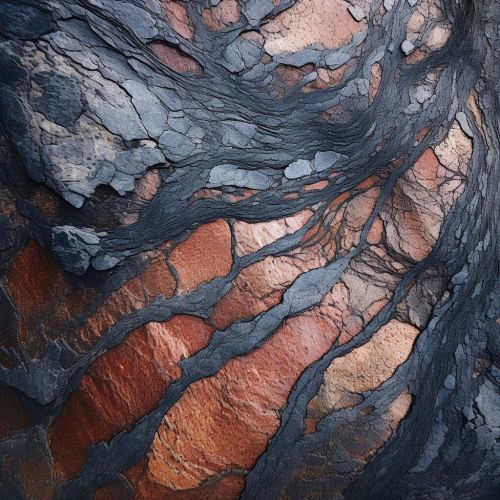Igneous rock
Introduction
Igneous rock is one of the three main types of rock, alongside sedimentary and metamorphic rocks. Derived from the Latin word "Ignis", meaning fire, these rocks form through the cooling and solidification of magma or lava. This process can occur beneath the Earth's surface, resulting in intrusive igneous rocks, or on the surface, leading to the formation of extrusive igneous rocks.


Formation
The formation of igneous rocks involves a series of processes that begin deep within the Earth's mantle. Here, high temperatures and pressures melt solid rock into a molten substance known as magma. This magma can then rise through the Earth's crust due to its lower density compared to the surrounding rock.
Intrusive Igneous Rocks
When magma intrudes into the crust and cools slowly over thousands or even millions of years, it forms intrusive, or plutonic, igneous rocks. The slow cooling allows large crystals to form, giving these rocks a coarse-grained texture. Examples of intrusive igneous rocks include granite, diorite, and gabbro.
Extrusive Igneous Rocks
In contrast, when magma reaches the Earth's surface through volcanic eruptions and cools rapidly, it forms extrusive, or volcanic, igneous rocks. The rapid cooling does not allow large crystals to form, resulting in a fine-grained or glassy texture. Examples of extrusive igneous rocks include basalt, andesite, and rhyolite.
Classification
Igneous rocks are classified based on their mineral content and the size of the crystals in their matrix. This classification is primarily based on the rock's silica (SiO2) content, which can range from felsic, with a high silica content, to mafic, with a lower silica content, and ultramafic, with the lowest silica content.
Felsic Igneous Rocks
Felsic igneous rocks, such as granite and rhyolite, have a high silica content (over 65%). These rocks are generally light in color and contain minerals such as quartz, feldspar, and muscovite.
Mafic Igneous Rocks
Mafic igneous rocks, such as basalt and gabbro, have a lower silica content (45-55%). These rocks are generally darker in color and contain minerals such as pyroxene, olivine, and plagioclase feldspar.
Ultramafic Igneous Rocks
Ultramafic igneous rocks, such as peridotite, have the lowest silica content (less than 45%). These rocks are composed almost entirely of mafic minerals, particularly olivine and pyroxene.
Economic Importance
Igneous rocks have significant economic importance. They are a major source of metal ores such as copper, gold, silver, lead, and zinc. For example, the largest gold deposits in the world are found in the Witwatersrand Basin in South Africa, which is a large igneous province. In addition, igneous rocks such as granite and basalt are widely used in construction and landscaping for their durability and aesthetic appeal.
